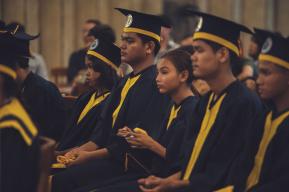News
UNESCO commends Cambodia for the inscription of Koh Ker on the World Heritage List

The UNESCO designation acknowledges the exceptional historical and architectural significance of the Koh Ker archaeological site and its Outstanding Universal Value, serving as a tribute to the enduring legacy of the Khmer civilization and efforts made by Cambodia to safeguard its treasures for future generations.
UNESCO Representative to Cambodia, Mr. Sardar Umar Alam, congratulated Cambodia on this achievement: “The inscription of Koh Ker on the UNESCO World Heritage List constitutes a significant milestone for Cambodia, reaffirming our joint endeavor to protect and promote the values of cultural heritage for sustainable development. As we celebrate, this achievement opens doors to numerous opportunities for sustainable tourism development and livelihood promotion. UNESCO will continue to work hand in hand with Cambodia for site conservation, including through scientific research, and to further promote the Khmer cultural heritage to the world.”

About the Koh Ker World Heritage site:
Koh Ker was the capital of the Khmer Empire for a brief period between 928-941 C.E. under its founder King Jayavarman IV. Nestled within the verdant Cambodian broad-leaf forest between the slopes of the Dangrek and Kulen mountains, the site sits on the ancient road connecting Angkor to Beng Mealea, Preah Vihear, and from there, Phimai in Thailand and Wat Phu in Laos.
Koh Ker boasts several archaeological remains, including unique-in-style temples, impressive Shiva-lingas sanctuaries, as well as civil structures, ponds, dykes, reservoirs, and ancient roads that reflect the influence and grandeur of the Khmer Empire. This archaeological marvel offers a profound insight into its era's well-organized projects of regional, social, economic, and architectural development, town planning, and rural infrastructure.


At the heart of Koh Ker's significance also lies its exceptional architectural achievements. The heritage site is characterized by a pyramid-style temple, known as the Prasant Prang, situated in the Prasat Thom complex. The only one in Southeast Asia, the Prasat Prang, forms the apotheosis of an eccentric building style, with a towering step pyramid rising 35 meters above the surrounding landscape.
Other exceptional characteristics of Koh Ker include water management techniques combining elements of highland river damming with the more traditional lowland system of large reservoirs, canals, and terraced fields, as well as monumental art, of which the sculptures are the most prominent, executed in the ronde-bosse technique. Its one-of-a-kind iconography – currently referred to as the Koh Ker style – is best defined by its dynamic motion and sense of movement. Giant sculptures of the Indian epics of Ramayana and Mahabharata adorn the temples and sanctuaries and are considered masterpieces.

Due to the turbulent effects left by the Cambodian civil war, most of the statuary on the site was looted. In the past decade, under the leadership of the Royal Government of Cambodia and in cooperation with the international community, Cambodia has achieved impressive results in the repatriation of ancient statues and artifacts in the framework of the UNESCO 1970 Convention on the Means of Prohibiting and Preventing the Illicit Import, Export and Transfer of Ownership of Cultural Property. Some reclaimed pieces can now be found at the National Museum in Phnom Penh.

UNESCO in action in Koh Ker:
In a concerted effort to preserve Cambodia's cultural heritage, UNESCO has embarked on ambitious projects in support of the preservation of the ancient site of Koh Ker and the improvement of the livelihoods of the communities living around the site. UNESCO's involvement in Koh Ker represents a multifaceted approach to safeguarding this heritage site.
One pivotal aspect of UNESCO's work in Koh Ker was the provision of technical assistance to strengthen the capacity of the local authorities and experts, in the preparation of the nomination dossier of the Koh Ker site, with the support of the World Heritage International Assistance. This support played an instrumental role in the inscription of Koh Ker on the UNESCO World Heritage List.
Furthermore, UNESCO also worked actively to strengthen disaster risk resilience in Koh Ker, thanks to the support of the UNESCO Heritage Emergency Fund, and contributed to reducing the site’s vulnerability to natural and anthropogenic hazards. The project implemented from July 2022-June 2023 also supported a demining operation which resulted in the clearance of 306,334 m2 of contaminated land within the World Heritage property and buffer zone. Through awareness-raising programmes, the project also contributed to building the understanding of the communities living around Koh Ker on the prevention of the looting and illicit trafficking of cultural properties.
With the financial support of Japan, UNESCO is currently implementing a project to safeguard documentary archives associated with World Heritage properties in Southeast Asia, including Koh Ker. The protection of the documentary heritage related to the site is critical for understanding, studying, managing, and monitoring the World Heritage property in the future.


Cambodian heritage on the UNESCO Lists:
The archeological site of Koh Ker joins three other Cambodian properties inscribed on the World Heritage List: Angkor (1992); Temple of Preah Vihear (2008); and Temple Zone of Sambor Prei Kuk, Archeological Site of Ancient Ishanapura (2017). Cambodia also boasts six elements inscribed on the UNESCO List of Intangible Cultural Heritage: Royal Ballet of Cambodia (2008); Sbek Thom, Khmer Shadow Theatre (2008); Tugging rituals and games (2015); Chapei Dang Veng (2016); Lkhon Khol Wat Svay Andet (2018); and Kun Lbokator, traditional martial arts in Cambodia (2022).
UNESCO will continue to work in Koh Ker and support Cambodia and its people for the safeguarding of cultural heritage and the realization of the full potential of the 2030 Agenda for sustainable development.
Click here to find out more about UNESCO’s work in Cambodia.

Koh Ker, Archaeological Site of Ancient Lingapura or Chok Gargyar







